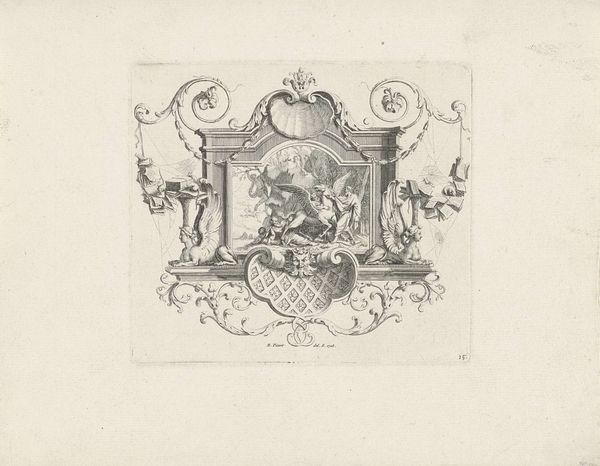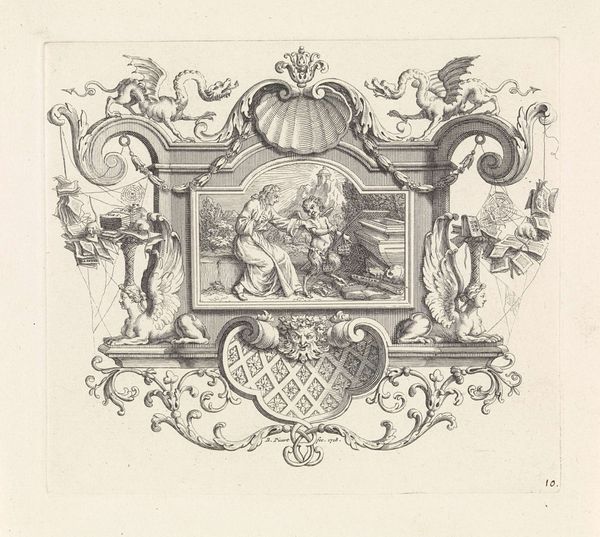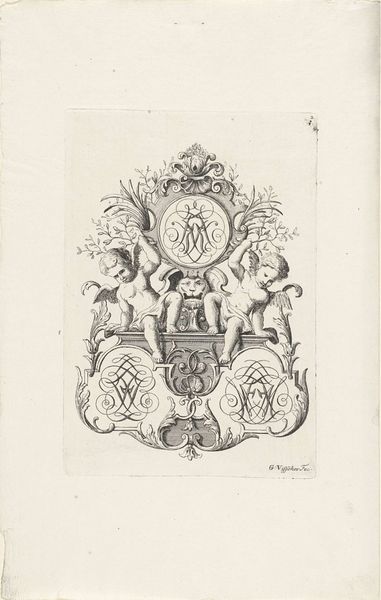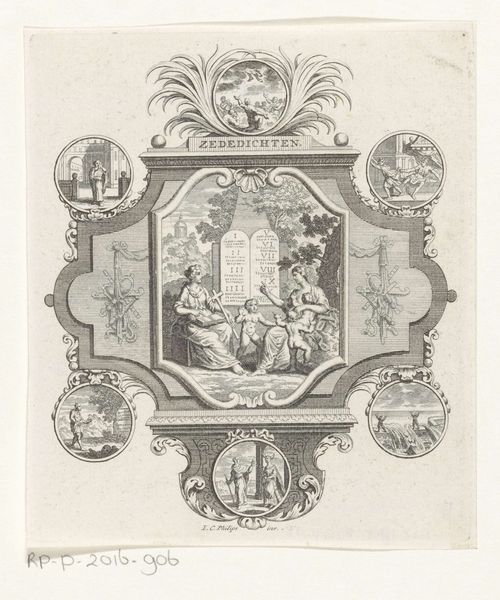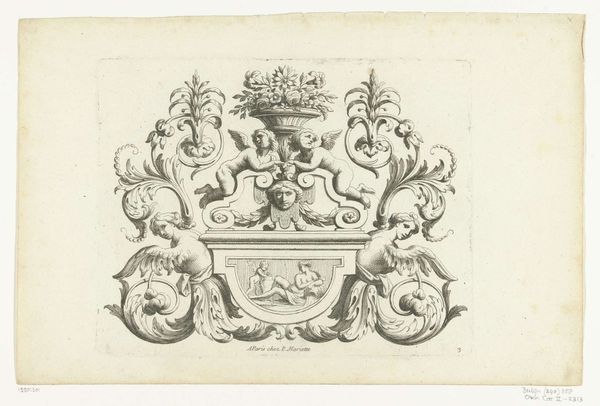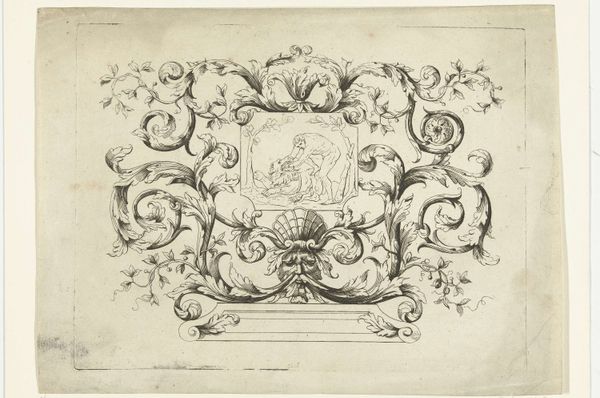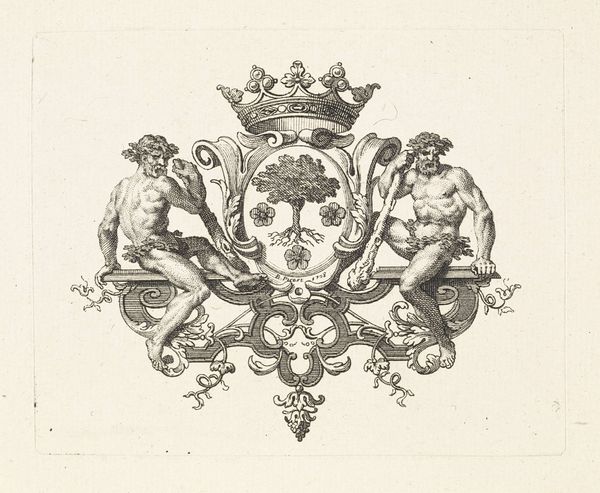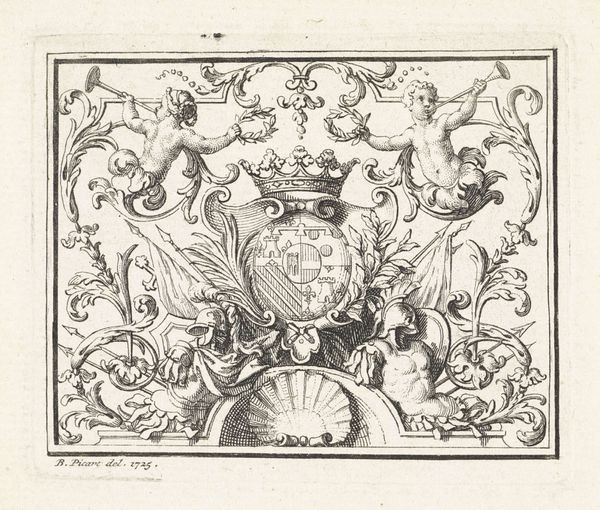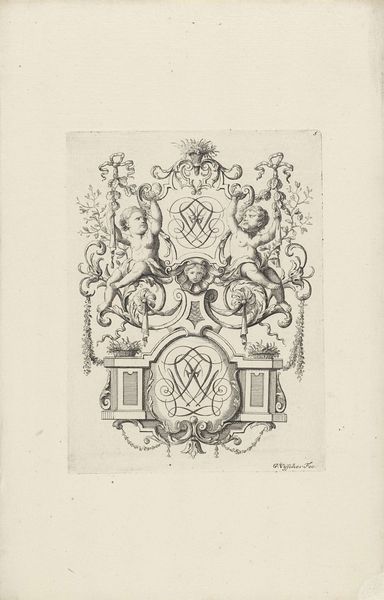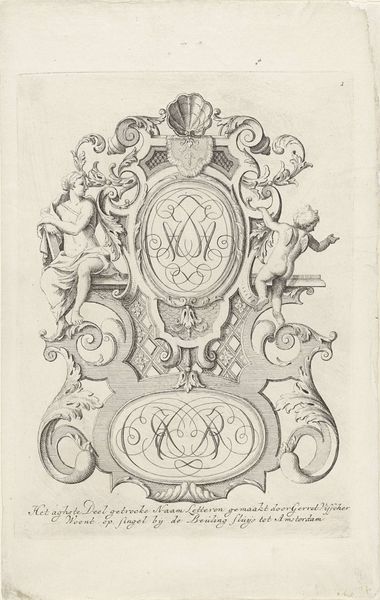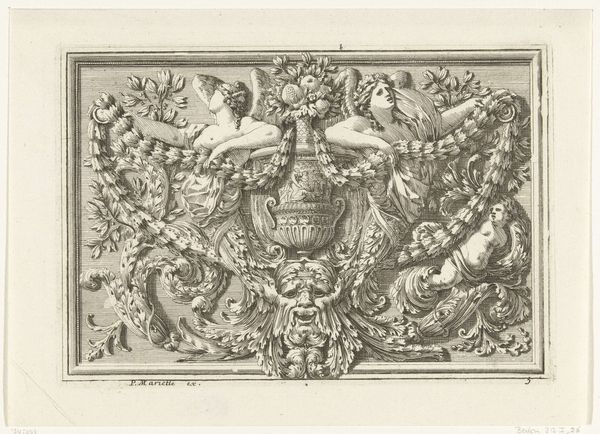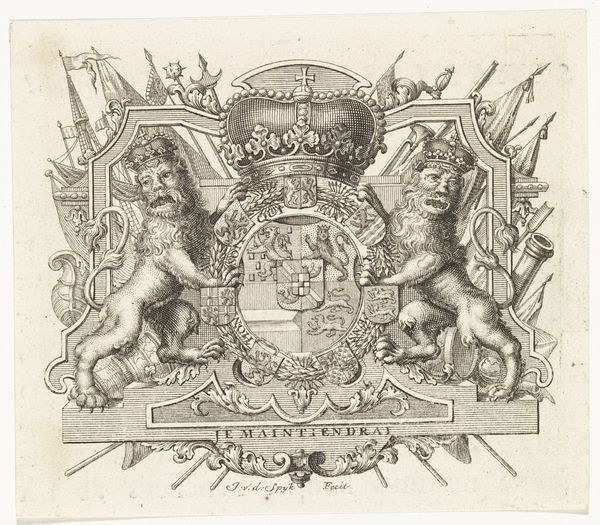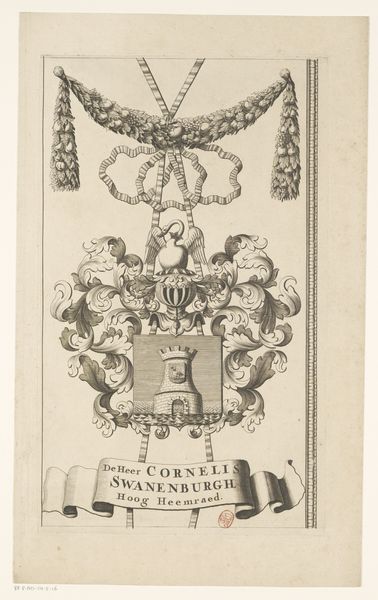
graphic-art, print, engraving
#
graphic-art
#
allegory
#
baroque
# print
#
old engraving style
#
engraving
Dimensions: height 120 mm, width 137 mm
Copyright: Rijks Museum: Open Domain
Curator: Ah, an excellent piece of graphic art! We are viewing a work by Bernard Picart, titled "Gedenkteken voor Guillaume de Lamoignon," created in 1718. It’s an engraving, currently held here at the Rijksmuseum. Editor: Striking. It’s overwhelmingly ornate; the eye doesn’t know where to settle. The texture created by the engraving is incredibly detailed but somehow unsettling. What am I supposed to feel looking at this? Curator: This work embodies the Baroque style, which thrived on intricate details and dramatic flair. The “Gedenkteken,” or memorial, utilizes allegory to honor Guillaume de Lamoignon. Notice the putti, symbols of innocence, juxtaposed with…is that a skull? Editor: Yes, centrally placed! Below the checkered heraldic shield, which I presume identifies Lamoignon's lineage? The skull throws the whole thing into sharp relief. It’s a very bold visual statement, considering the putti look almost playful up top. Curator: Precisely. It's a memento mori, a reminder of mortality, very common in memorial art of this era. Death is part of life, and marking an illustrious person’s transition…It reminds the viewer to lead a virtuous life. See also, how the Sphinxes support both sides—these mythical figures add further depth. In some readings, the Sphinx is about protecting secret knowledge of great cultural import. Editor: So, they bookend his legacy. Interesting choice. Still, the composition itself… it's incredibly busy. So many competing visual elements vying for attention! Curator: Consider that Picart created this during a period of significant social and political change. Images weren’t simply decorative; they were tools of power. By using loaded symbolism—a skull representing passing, paired winged griffins guarding a family crest—Picart speaks to concepts of duty, family pride, and legacy. These symbols have been layered together for generations in European cultures. Editor: So it’s a condensed, almost frantic representation of legacy. Okay, seeing the heraldry helps unlock meaning in it and consider what Lamoignon's reputation and social class were. But still, the pure excess is difficult to digest at first glance. Curator: Exactly. That tension—between visual splendor and somber reminder—captures the Baroque spirit perfectly. By invoking memory and morality, the piece speaks to broader existential questions while serving its primary function as a dignified commemorative gesture. Editor: I see your point. The artwork’s layered structure reflects how personal identity is embedded in intricate visual languages and the constant reminder of eventual death. This helps create a narrative both imposing and ephemeral at once.
Comments
No comments
Be the first to comment and join the conversation on the ultimate creative platform.
